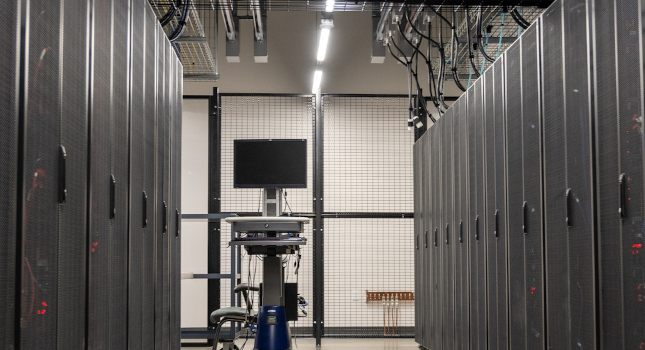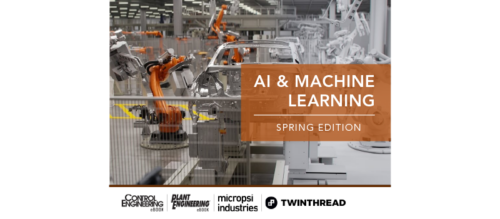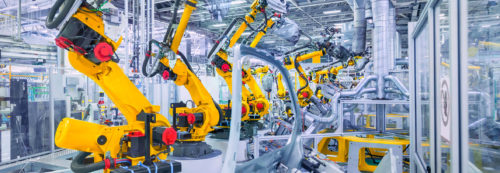How to organize, protect and apply big data in automation
Big data in automation and manufacturing can transform operations, but great care needs to be applied when inserting it into a company.
Big data insights
- Big data and analytics tools can help manufacturers analyze vast amounts of data and make better decisions about their operations.
- Manufacturers can improve the customer experience and satisfaction while also achieving better product production through shorter innovation cycles.
When rolling out AI-enabled machine vision to automate inspection processes, manufacturers drive quality improvement initiatives with an eye toward improving production yield, increasing process efficiency, and reducing costs. At a higher level, many manufacturers view such endeavors as part of a wider smart manufacturing strategy linked with Industry 4.0 or the Industrial Internet of Things (IIoT)—using quick, easy, and cost-effective technology implementations to become more flexible, efficient, and innovative.
“In the end, a manufacturer that can differentiate its products and be more competitive by increasing quality, decreasing cost, or both is in a better position to grow,” said Max Versace, CEO of Neurala.
Jeremy Dodson, chief information security officer of NextLink Labs, agreed, noting that by automating specific processes and using big data analytics, manufacturers can identify bottlenecks and inefficiencies in their operations and make improvements that lead to increased efficiency and productivity.
What is big data?
Gartner defines big data as high-volume and/or high-variety information assets that demand cost-effective, innovative forms of information processing. Big data and analytics tools can help manufacturers analyze vast amounts of data and make informed decisions about their operations, supply chains and product development.
“Manufacturers can identify and address quality issues in real time by collecting and analyzing data from production processes, leading to improved product quality,” Dodson explains. “By adopting new technologies, manufacturers can stay ahead of the competition and gain a competitive edge in the market. Streamlining operations and improving efficiency helps manufacturers reduce costs and increase profitability.”
Big data benefits for automation
Taking big data and automation goals beyond the manufacturing arena can span the entire organization in a transformative way, from HR and marketing to improved customer satisfaction. By using big data and analytics to better understand customer needs and preferences, manufacturers can improve the customer experience and not only increase customer satisfaction but also achieve individuality of products through ever shorter innovation cycles.
“The amount of data available is exploding due to the rapid development of 5G wireless, OPC, and other system-wide IP standards, which are driving an increase in the number of devices being installed and connected at facilities,” said Chris Liu, product marketing manager for edge/IIoT at Siemens Industry, Inc.
However, as big data continues to grow exponentially, so too does the amount of dark data, or data completely unused by anyone in the organization. According to a recent “The State of Dark Data” report by TRUE Global Intelligence, sponsored by Splunk, about 55% of an organization’s data is not just untapped but may in fact be completely hidden, undiscovered, unquantified, or even unknown.
“Most companies are already generating far more data than they’re using,” said Jeff Winter. Citing a study by the University of Texas estimating that a 10% increase in data usability results in the average Fortune 1000 company’s revenue increasing by $2 billion, Winter explains that before a company can improve its ability to manage and handle such massive amounts of data, it’s important to define its vision of Industry 4.0 and what it means to the organization.
“When it comes to digital transformation, companies can have many different objectives. Optimizing production has a different set of criteria than reducing cost, expanding into a new market, creating a new business model, or changing the customer’s experience,” says Winter. “At the core of it all is the ability to properly capture and harness the power of that data.”
Digital optimization versus digital transformation
Many companies are currently focused on digital optimization, which simply means getting better at what they are already doing. Optimization in and of itself is not particularly transformative. Optimization may involve the application of big data and AI to, for example, more quickly and efficiently make and deliver products to customers while reducing waste.
In contrast, digital transformation involves using big data and AI to fundamentally change the way a company operates. Digital optimization and digital transformation come with different challenges, benefits, and complications. Regardless of the digital transformation objective, transformation is generally much more difficult because it affects all personnel and processes across an organization, while optimization rarely has such an impact.
“I’m working with some companies where their entire digital transformation mission is to change customer experience,” Winter said. “Manufacturing is a small part of that, but that also includes an entirely new business model with outcome-based contracts, selling product as a service, which significantly changes operation management, project management, and engineering as well.”
Key big data considerations for manufacturers
After defining vision, choosing objectives, and deciding whether to focus on digital optimization, transformation, or both, the next step is to understand the problems that need to be addressed and to identify the required data that needs to be collected for each.
For example, if a project is centered around minimizing product recall expenses, it’s not good enough to merely store images and inspection results of the inspected products, according to Versace. It’s also important to capture the production date, time, batch number, product number, distributor, or customer shipping location if you want quickly act in the event of a recall, he explains. “Only then can you begin to define the process by which the data can be collected, organized, protected, and stored in a manner that allows quick access when needed.”
Data governance is another key factor to consider, according to Dodson. It’s essential to establish clear policies and procedures for managing and protecting data, including who has access to it and how it can be used. Manufacturers should implement robust cybersecurity measures to protect against data breaches and cyberthreats. This includes things like encryption, firewalls, and secure data storage.
Data quality is also of the utmost importance. It is essential to ensure that the collected data is accurate and relevant. This requires processes for verifying the quality of the data and ensuring that it is managed consistently. Data analysis is another factor that is critical to success. Manufacturers need to have a plan for analyzing and using the collected data. This may include using tools like data visualization software or hiring data analysts to help interpret the data.
“With regard to data storage and infrastructure, manufacturers should have a scalable and reliable infrastructure to store and manage the large amounts of data generated by their operations,” says Dodson. “Data privacy is also crucial. Manufacturers need to be transparent about how they collect and use data and respect the privacy of their customers and employees. This may require implementing consent management systems and adhering to relevant data privacy regulations.”
On the manufacturing side, data stability is another key factor to consider, according to Liu. “With impressive 100 millisecond data acquisition rates, system stability is critical to ensuring that data is not lost during the acquisition cycle.”
Finally, to get the most value out of big data, manufacturers may need to share and integrate data across different departments and systems. Doing so requires careful planning and coordination to ensure that data is being shared in a secure and controlled way.
Edge or cloud computing considerations
When it comes to the increased use of technology and automation, the pros and cons of on-premises edge computing and cloud-based approaches need to be carefully balanced. The most successful implementations take a hybrid approach, weighing the need for processing speed against the need for processing power. For industrial applications, on-premises edge computing will always be faster than the cloud at real-time processing. Other advantages of on-premises computing include greater control over infrastructure and data.
With an on-premises approach, a manufacturer has more control over its infrastructure and data, as they are all housed within the organization’s facilities. In some cases, an on-premises approach may offer higher levels of security, as the manufacturer has more control over the physical security of its data center and can implement additional security measures as needed.
The drawbacks include higher upfront costs. Setting up an on-premises infrastructure can be more expensive than using cloud-based services, as the manufacturer must purchase and maintain all necessary hardware and software. Limited scalability is another disadvantage. An on-premises infrastructure may be more challenging to scale up or down as needs change, as it requires physically adding or removing hardware.
In contrast, cloud-based solutions offer lower upfront costs. Cloud-based services are typically paid for on a subscription basis, which can be more cost-effective than purchasing and maintaining on-premises hardware and software. Cloud-based services are generally easier to scale up or down as needs change, as the provider can add or remove resources as needed.
Cloud-based services offer less control over infrastructure and data. With a cloud-based approach, the manufacturer relies on the provider to maintain and secure the infrastructure and data. While cloud providers generally have robust security measures in place, there is still a risk of data breaches or other security incidents.
Ultimately, the decision between on-premises and cloud-based approaches will depend on the specific needs and priorities of the manufacturer. It’s vital for manufacturers to carefully evaluate their options and choose the method that best meets their needs for security, cost, control, and scalability.
Cybersecurity’s key role
While the benefits of big data and automation are significant, it’s crucial for manufacturers to prioritize cybersecurity when rolling out new technologies. Without proper cybersecurity measures, manufacturers risk exposing sensitive data and suffering costly breaches that could undermine all the benefits of their technological advancements.
– The Association for Advancing Automation (A3) is a CFE Media and Technology content partner. Edited by Chris Vavra, web content manager, Control Engineering, CFE Media and Technology, cvavra@cfemedia.com.
Original content can be found at Association for Advancing Automation (A3).
Do you have experience and expertise with the topics mentioned in this content? You should consider contributing to our CFE Media editorial team and getting the recognition you and your company deserve. Click here to start this process.






